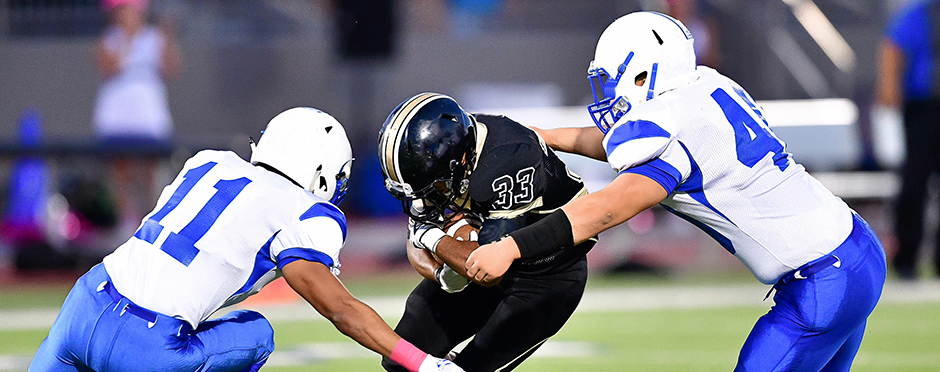
The Sub concussive Blow: How Minor Head Impacts Affect Us
Leave a CommentIf you follow the NFL, you followed Tua Tagovailoa’s big hit this season, his history of concussions, and his alarming on-field reactions. This is not considered a typical response to a concussion. Many football players (from youth to professional) can play an entire season without sustaining an injury severe enough to be pulled from the game. Many of these athletes, especially a position like a quarterback, may experience what is called repetitive sub-concussive blows or hits to the head. This refers to a head impact that does not necessarily meet the specific clinical criteria to be a diagnosed concussion but still delivers a force to the brain that should be taken seriously. Some of these impacts can happen by direct contact of helmet to helmet, helmet to the ground, or helmet contact with another person or body. Unlike a traditional concussion, these blows don’t usually produce any immediate symptoms such as dizziness, headaches, or confusion. Symptoms may go mostly unnoticed, but in the medical world, we are becoming more focused on the effects of these impacts.
Although these hits are less severe than concussive episodes, sub-concussive impacts happen more frequently and repetitively. Current research has suggested this form of head trauma may have an accumulative effect and can lead to neurological impairment later in life, so we decided to dive deeper into the research. Most research that we as physical therapists have studied have been specific to sports-related concussions, the best course of treatment, and how to safely return an athlete to the game. More research today now looks at the likelihood of sub-concussive blows, the short-term effects to the nervous system, and the impact on our athletes. We’re learning that in the short term, there haven’t been any significant clinical findings suggesting neurological injury or brain damage. We do see some small changes at the neuron level, but ultimately, without injury, changes in cognition, emotion, or sensory influences. To this day, research is still limited on the impact of sub-concussive blows, especially the cumulative or long-term effects1.
So, what can we do now? What do you do as a parent or guardian of a child worried about sub-concussive blows in their sport? Education is key! Impacts to the head can sometimes be unavoidable, and we shouldn’t be afraid to allow our kids to be kids! There is a risk of sustaining concussions on the playground, playing with peers during recess or P.E., or staying active with friends- not just in impact sports.
There have been a few changes in rules and coach education in impact sports, such as teaching and learning proper hitting techniques, as well as increasing the youth’s age for checking in hockey and tackling in football. These modifications and adjustments from USA Hockey and USA Football have been proven to decrease the risk of concussion in youth3. Many protective equipment companies claim to have equipment that prevents concussions. However, there is nothing in the market that can prevent concussions with 100% confidence. Some equipment may help reduce the risk or intensity of the impacts. Teaching our kids body awareness and providing proprioception and strength training for participating in normal age-appropriate activities can also be an important piece! And lastly, don’t forget your friends at Athletico. We have trained clinicians who can help manage some of these concerns with proper evaluation, strengthening, training, and recovery programs for our athletes.
Find A Vestibular Therapist Near You
The Athletico blog is an educational resource written by Athletico employees. Athletico bloggers are licensed professionals who abide by the code of ethics outlined by their respective professional associations. The content published in blog posts represents the opinion of the individual author based on their expertise and experience. The content provided in this blog is for informational purposes only, does not constitute medical advice and should not be relied on for making personal health decisions.
References:
1. Johnson B, Neuberger T, Gay M, Hallett M, Slobounov S. Effects of subconcussive head trauma on the default mode network of the brain. J Neurotrauma. 2014 Dec 1;31(23):1907-13. doi: 10.1089/neu.2014.3415. Epub 2014 Oct 16. PMID: 25010992; PMCID: PMC4238241.
2. Belanger HG, Vanderploeg RD, McAllister T. Subconcussive Blows to the Head: A Formative Review of Short-term Clinical Outcomes. J Head Trauma Rehabil. 2016 May-Jun;31(3):159-66. doi: 10.1097/HTR.0000000000000138. PMID: 25931186.
3. Emery C, Galarneau J, Palacios-Derflingher L, et alDoes disallowing body checking in non-elite 13- to 14-year-old ice hockey leagues reduce rates of injury and concussion? A cohort study in two Canadian provinces British Journal of Sports Medicine 2020;54:414-421.
